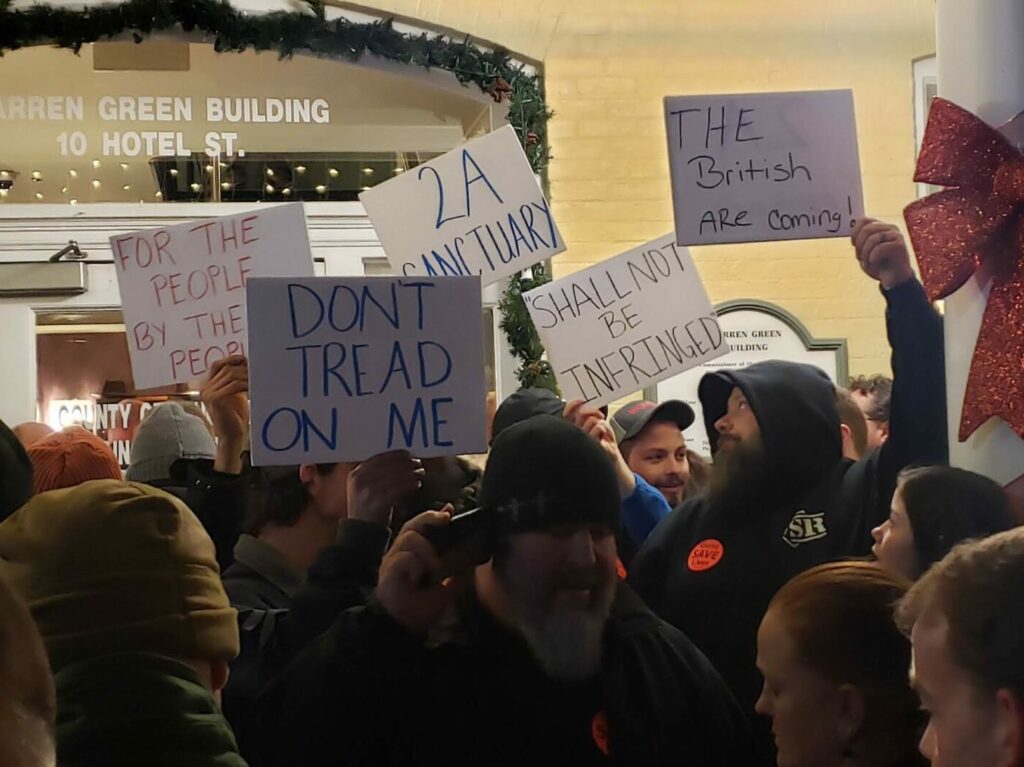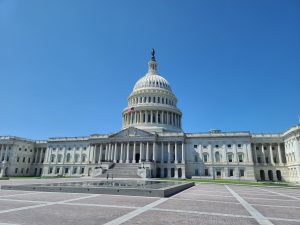CDC officials secretly met with gun-control advocates after the White House and Senator Dick Durbin (D., Ill.) connected the two sides. The advocates wanted a description that referenced Gary Kleck’s estimate of 2.5 million defensive gun uses per year removed from the CDC’s website. Despite initially declining to do so, they eventually caved and made the change without consulting any other outside groups or announcing the edit.
Contributing Writer Jake Fogleman explains why this will likely lead to a new low of trust in the agency from gun owners. The CDC has long been on thin ice with many shooters after top officials lobbied for new gun bans in the 1990s. That controversy led to new funding restrictions that had only just recently been loosened. The new controversy could force that progress back at least a few steps.
Three scholars who have studied gun self-defense, including Gary Kleck, also weighed in on the situation. They questioned the change itself. However, they were more concerned with the process that led to it.
Plus, Manhattan Institute’s Robert VerBruggen joins the podcast to talk about the serious ethical problems with the CDC’s stealth edit of self-defense stats.

Analysis: CDC Deleting Gun Defense Stats Further Strains Fraught Relationship With Gun Owners [Member Exclusive]
By Jake Fogleman
The Centers for Disease Control’s (CDC) involvement in gun research has long been controversial in American politics. News of the agency holding a private meeting with gun-control advocates to shape the data it publishes on its website will only worsen that polarization.
Emails obtained through a Freedom of Information Act (FOIA) request, first reported by The Reload, provided new insight into the agency’s decision to remove a CDC-commissioned review of studies from its website. That paper noted estimates of defensive gun uses (DGUs) by published scholars range between 60,000 and 2.5 million times per year. And the emails show the decision to scrub it was made after a months-long pressure campaign from a trio of advocates.
The advocates focused their objections on the high-end estimate that retired Florida State University criminologist Gary Kleck established in the 1990s. They claimed Kleck’s survey results are misleading, repeating decades-old critiques of the research. However, Mark Bryant of the Gun Violence Archive, one of the advocates in the meeting, also argued it should be removed because its publication made passing gun-control laws harder.
“And while that very small study by Gary Kleck has been debunked repeatedly by everyone from all sides of this issue [even Kleck] it still remains canon by gun rights folks and their supporting politicians and is used as a blunt instrument against gun safety regulations every time there is a state or federal level hearing,” Bryant wrote in an email to CDC officials. “Put simply, in the time that study has been published as ‘a CDC Study’ gun violence prevention policy has ground to a halt, in no small part because of the misinformation that small study provided.”
The emails show that the agency initially stood by its description of DGU estimates–a decision some scholars who study the topic described as “balanced”–until a previously undisclosed meeting took place between the advocates and CDC officials. Following the meeting, though, the CDC decided its webpage would be more “succinct” if it removed the range of estimates and the link to its review of studies on DGUs.
The consequences of the CDC’s private coordination with openly-partisan gun-control advocates for public trust in the institution could be severe. News of the surreptitious meeting and subsequent change risks damaging its reputation among gun owners in a way not seen in decades.
Following the publication of multiple studies in the early 1990s that purported to show a link between gun ownership and an increased risk of being a homicide victim, gun-rights advocates accused the agency of having an anti-gun bias. Public statements at the time from then-director of the CDC’s National Center for Injury Prevention and Control, Dr. Mark Rosenberg, certainly didn’t help the agency shed that reputation.
“We need to revolutionize the way we look at guns, like what we did with cigarettes,” he told The New York Times in 1994. “It used to be that smoking was a glamour symbol, cool, sexy, macho. Now it is dirty, deadly, and banned.”
Consequently, gun owner skepticism of the CDC grew to new heights, which spurred Congress to act. In 1996, lawmakers attached a provision to an omnibus spending bill–known as the Dickey Amendment–that specified “none of the funds made available for injury prevention and control at the Center for Disease Control and Prevention may be used to advocate or promote gun control.” The law also reallocated millions in funding initially earmarked for firearms research into studies related to traumatic brain injuries.
While the amendment did not prohibit firearm-related research, only outright advocacy, the CDC responded to its passage by significantly reducing its involvement in studying the topic over the next two decades.
That has changed in recent years, though. The 2018 omnibus spending bill, signed into law by then-President Trump, added clarifying language that stated, “While appropriations language prohibits the CDC and other agencies from using appropriated funding to advocate or promote gun control, the Secretary of Health and Human Services has stated the CDC has the authority to conduct research on the causes of gun violence.” The bill also provided $25 million in funding for research on gun violence to be split between the National Institutes of Health and the CDC.
That a Republican President signed a law providing funding to the once-maligned agency to conduct “gun violence research” seemed to indicate that the politics of the CDC had turned a corner. While still largely distrusted by ardent gun-rights activists, the CDC’s potential to conduct fair-minded research into the root causes of gun violence gained an audience from at least some Republican lawmakers.
The CDC quickly began funding new research initiatives in 2020 and 2021, with CDC Director Rochelle Walensky hoping to go even further.
In an August 2021 interview with CNN, Walensky said that the year’s homicide spike meant it was “pedal to the metal time” for gun violence research. At the same time, she was careful to avoid re-polarizing the issue.
“I’m not here about gun control,” she said. “I’m here about preventing gun violence and gun death.”
She even promised to work closely with gun owners as part of the initiative.
“We cannot understand the research of firearm violence, firearm injury, without embracing wholeheartedly, the firearm owning community,” Walensky said. “I really do believe that the population of people who wants to own a gun doesn’t want people hurt by them. The majority of the population does not want people hurt by them. I want them at the table.”
But now, the goodwill the agency had garnered among Republicans and gun owners may be squandered.
Top Republican lawmakers, who were already critical of the CDC’s handling of the coronavirus pandemic, have slammed the agency for this latest transgression.
House GOP Chairwoman Elise Stefanik, the number three ranking Republican for the soon-to-be House majority, accused the CDC of “acting as an arm of the Democratic Party, further politicizing the facts, and shamefully lying to the American people to advance their Far Left agenda” in an email to The Reload.
Senator Bill Cassidy (R.-LA), who will serve as the ranking Republican on the Senate committee that oversees the CDC next Congress, called the agency’s decision to bury its defensive gun use estimates “absolutely unacceptable.”
“Scrubbing government websites of statistics and evidence that are inconvenient to one side’s political narrative is absolutely unacceptable,” he said.
Republican lawmakers have already committed to making oversight and investigation a primary focus of their time in the next Congress, especially in the House of Representatives. The CDC’s private consultation with gun-control advocates will likely be added to the list of grievances House Republicans have with the Government’s public health apparatus next session.
And though Democratic control of the Senate and White House likely means that House Republicans will have reduced leverage over spending priorities, the debate over funding for gun-related initiatives at the CDC could reignite. The era of bipartisan support for funding CDC-led gun research may prove to be short-lived.
Evidence that the CDC allowed gun-control advocates to shape its messaging on defensive gun uses without consulting anyone other outside points of view will almost certainly reopen old wounds for gun-rights advocates. That’s the last thing the beleaguered agency needs right now.
Podcast: Manhattan Institute’s Robert VerBruggen on the CDC Caving to Gun-Control Advocates [Member Early Access]
By Stephen Gutowski
The CDC came under fire this week after we broke news they had deleted defensive gun use (DGU) stats from their website under pressure from gun-control advocates. It’s an extremely important story, but one that involves some complicated science.
So, I wanted to bring on somebody who has extensive knowledge of the topic to help us get a better understanding of the controversy. That’s why I asked Manhatten Institute fellow Robert VerBruggen to join me. He has written about the strengths and weaknesses of different methods for estimating DGUs, including the Gary Kleck surveys at the center of the fight.
He said the real problem with the CDC ordeal is that it raises ethical questions which cast a shadow over the agency’s reputation. He said officials should not have consulted with gun-control advocates in secret and to the exclusion of other outside perspectives. VerBruggen noted there was no new information shared during the conversations with the advocates, and the initial language the CDC scrubbed from their website was not inaccurate.
VerBruggen said there are legitimate critiques of using surveys to calculate DGUs. The media-report-based estimate that gun-control advocates prefer is even more problematic, according to VerBruggen. He explained the ins and outs of the different approaches and why they produce such divergent results.
Plus, Contributing Writer Jake Fogleman and I discuss the political fallout from the CDC’s actions.
You can listen to the show on your favorite podcasting app or by clicking here. Video of the episode is also available on our YouTube channel. Reload Members get early access on Sunday. It goes live for everyone else on Monday.
Come on the Podcast
One of the many perks of a Reload membership is the opportunity to appear on the podcast. We’ve had a lot of people on the show from all kinds of backgrounds. It’s one of my favorite segments since it gives us all a better insight into the community that makes this publication possible. If you want to come on the show, just reply to this email and let me know!

Defensive Gun Use Scholars Decry CDC Politicization [Member Exclusive]
By Jake Fogleman
Several scholars who study the use of guns for self-defense voiced concern about the CDC’s recent decision to remove information about how common they are after being pressured by gun-control advocates.
The researchers criticized the agency’s decision to remove a reference to the range of defensive gun use (DGU) estimates after the advocates complained the higher end of the scale made passing gun control more difficult. The advocates’ critiques centered on surveys conducted by retired Florida State University criminologist Gary Kleck, which found upwards of 2.5 million defensive uses per year in the 1990s. The CDC agreed to remove the reference to the estimates and a link to further research after a private meeting with just the gun-control advocates–something Kleck said was unbecoming of a scientific agency.
“If they were being honest and they really want it to come to the fairest, wisest decision, they would have reached out to me instead of simply asking gun-control advocates and scholars with a very pro-control bias what they think,” he told The Reload. “They clearly had no interest in getting to the facts.”
While much of the discussion between the CDC and the gun-control advocates centered on statistical and methodological critiques of Kleck’s work, it also veered into the explicitly political. After the private meeting, one of the advocates put the group’s motivations into stark terms.
“[T]hat 2.5 Million number needs to be killed, buried, dug up, killed again and buried again,” Mark Bryant, one of the attendees, wrote to CDC officials. “It is highly misleading, is used out of context and I honestly believe it has zero value – even as an outlier point in honest DGU discussions.”
Bryant, who runs the Gun Violence Archive (GVA), argued Kleck’s estimate has prevented new gun restrictions.
“And while that very small study by Gary Kleck has been debunked repeatedly by everyone from all sides of this issue [even Kleck] it still remains canon by gun rights folks and their supporting politicians and is used as a blunt instrument against gun safety regulations every time there is a state or federal level hearing,” he wrote in the same email. “Put simply, in the time that study has been published as ‘a CDC Study’ gun violence prevention policy has ground to a halt, in no small part because of the misinformation that small study provided.”
Despite initially standing behind the language the agency had used for years, CDC officials eventually agreed to change it, telling the advocates they would “make some edits to the content we discussed that I think will address the concerns you and other partners have raised.”
While Kleck’s research (which he stands behind) was the specific target of the revision, he wasn’t alone in his critique of how the CDC handled changing its description of DGUs.
Georgetown Professor William English, who produced a large survey last year with results similar to Kleck’s research, said the CDC did not contact him for input on the decision either. He argued the agency should have taken more care in considering changes requested by those with a clear political agenda.
“Whenever activists ask government agencies to change official information for political purposes, the merits of their arguments should be closely scrutinized,” English told The Reload.
He noted the CDC had identified the “serious methodological shortcomings” with the alternative DGU count suggested by Bryant and the other advocates, which generally doesn’t include incidents that aren’t reported in the news media. However, he said they didn’t recognize that survey-based estimates have been updated to counter many of the criticisms shared by the gun-control advocates or the outlier nature of their alternative.
“Although methodological criticisms have been made of Kleck’s estimates, multiple other surveys that are not vulnerable to these critiques have found well over a million defensive gun uses per year,” English said. “Thus, the weight of the evidence strongly counsels against lobbying efforts that seek to privilege GVA’s extraordinarily low estimates, which are the true outlier in this literature, while removing higher estimates that are based on representative surveys.”
Robert VerBruggen, a Manhattan Institute Fellow, has written extensively in the conservative publication National Review about DGUs. He has probed the weaknesses in high-end estimates, such as those produced by Kleck, and low-end estimates. He said the issue is not “the underlying statistical debate or the final text of the website” but the hidden process that resulted in the change.
“Estimates of ‘defensive gun uses’ vary extremely widely, and no one would have thought twice if the CDC’s fact sheet had–from the beginning–simply said that in general terms,” VerBruggen told The Reload. “What stands out is that, at a time when trust in our institutions runs low, and conservatives especially are cynical about the field of public health, the CDC removed a balanced summary of research findings from its website after being lobbied to do so by gun-control supporters — who in some cases were not shy about their political goals, and whose efforts were initially rebuffed on the entirely reasonable grounds that the original text was fine.”
The CDC justified its change in one of the FOIAd emails. It said it removed the range of DGU estimates and link to its review of research to clarify things because the “very wide range” might “raise more questions than it answered.”
“Because estimates of defensive gun use vary depending on the questions asked, populations studied, timeframe, and other factors related to study design, and given the wide variability in previous estimates and the desire to keep the fact sheet short and succinct,” the agency told the publication, “it made the most sense to remove the numbers from the fact sheet and acknowledge that additional research is necessary to understand defensive gun use prevalence, frequency, circumstances, and outcomes.”
Kleck rejected the CDC explanation, though. He argued the true motivation behind the change was evident.
“Saying they did it for the sake of brevity is a blatant lie; it’s ludicrous,” he said. “It’s not to be taken seriously. So, there has to be an alternative explanation. And given that it followed a lot of pressure from gun-control advocates, that is the most plausible explanation of why they did it.”
He agreed with Bryant’s assertion that the public’s understanding of how frequently Americans actually use guns for self-defense is key to whether or not there will be popular support for new gun restrictions. He said the understanding that DGUs are common is the main reason the ordinary people oppose gun prohibitions.
“It’s not the constitutional issue,” he said. “Only the advocacy groups, the anti-gun-control groups, actually care about the Second Amendment. The rest of the population they don’t even know what exactly it means or what its history is, or what militia meant when they mentioned militia and blah, blah, blah. That’s really not what’s behind popular opposition. That’s just, that’s irrelevant. But everybody can envision themselves being victimized and wish they had some way to minimize that.”
Regardless of the larger fight over gun ownership or how the CDC’s description ultimately impacts it, VerBruggen argued the way the agency went about changing its explanation of the critical issue left a stain on its reputation.
“Whatever the correct number of annual ‘DGUs’ turns out to be, this is a poor image for an agency that wants to fund gun research that could drive policy,” he said.
That’s it for now.
I’ll talk to you all again soon.
Thanks,
Stephen Gutowski
Founder
The Reload






